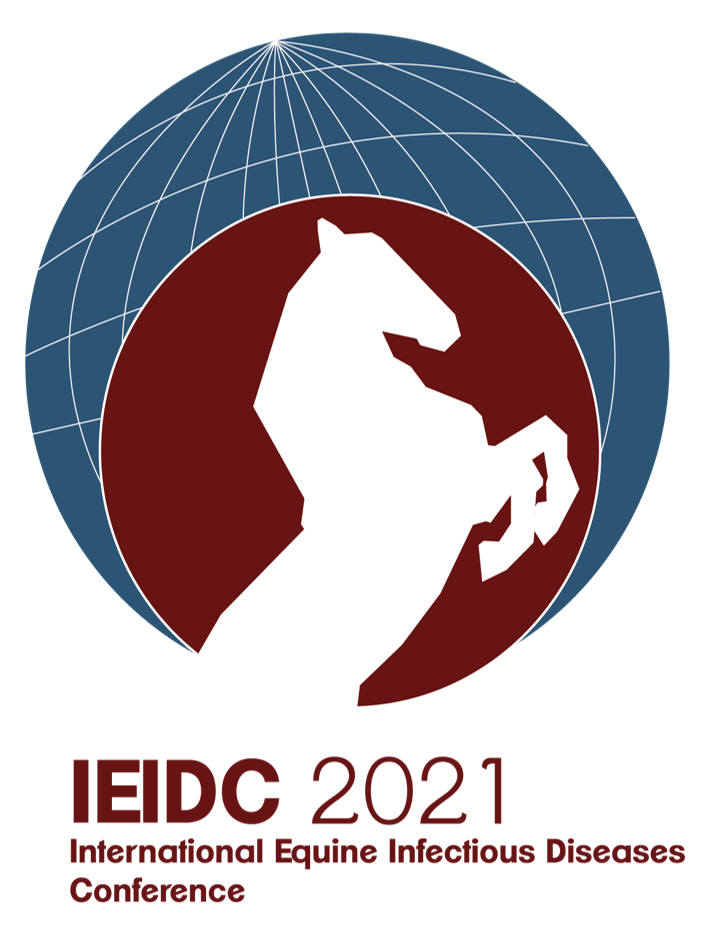Equine infectious Disease Conference Brings Professionals Together
 The live session of the 11th International Equine Infectious Diseases Conference has come to a close. The virtual five-day event brought researchers and veterinarians together from around the world to share and provide the latest information on infectious diseases of horses.
The live session of the 11th International Equine Infectious Diseases Conference has come to a close. The virtual five-day event brought researchers and veterinarians together from around the world to share and provide the latest information on infectious diseases of horses.
“This is an important conference for those of us who work in this field, as it is the only conference focused on the horse and the infectious diseases that affect horses,” said James Gilkerson, professor, University of Melbourne, and president of the IEIDC. “Infectious diseases cause serious health and welfare problems for horses across the globe. Horses and other equids are still used widely in developing countries for transport of people and goods, while the use of horses in sport in developed countries has seen a huge increase in the number of horses that are transported around the world for competitions.”
One of the larger topics discussed at this year’s conference was the April outbreak of the equine herpesvirus 1 in Valencia, Spain, at a spring event for northern European show jumpers. The eruption of EHV-1 affected approximately 600 of the 750 horses participating. The virus is primarily spread by exhaled droplets which led to rapid infections of others and can cause neurological problems as well as abortions in pregnant mares.
In the case of the April outbreak, unauthorized transporting of shedding horses helped the spread, which most notably occurred in Northern Europe. The outbreak caused the cancellation of several European events, including the World Cup.
“There were suddenly three or four horses with fevers and they couldn't find out why,” said Lutz Goehring, DVM, PhD, Warren Wright, Sr. - Lucille Wright Markey Endowed Chair in Equine Infectious Diseases at the University of Kentucky’s Gluck Equine Research Center. “Diagnostics where started, however it took another week before the first neurological cases started appearing. Typically, this is a reactivation of a latent virus in a single horse and it spreads from there.”
As a result of the virus, new bylaws have been introduced by the Federation Equestre Internationale (FEI), the sport’s governing body, aimed at maintaining necessary levels of biosecurity to prevent outbreaks at venues in the future. At least 20 horses were euthanized because the disease’s severity and several more are still recovering.
Another disease which shared the spotlight at the conference was a novel Rotavirus B, which was recently discovered by scientists in UK’s Department of Veterinary Science. Rotavirus B is similar to Rotavirus A, which first appeared in the 1970s. Rotavirus A has been one of the most common causes of foal diarrhea in horse breeding centers around the world. Infectivity and severity of disease generally decline with increasing foal age and are not considered to be a cause of diarrhea in horses over the age of 6 months. Current diagnostic tests for equine Rotavirus A cannot detect rotavirus B.
“In February we started to see a severe diarrhea increase in foals,” said Feng Li, DVM, PhD, professor and William Robert Mills Chair in Equine Infectious Disease at the Gluck Center. “Affected foals were not responding to treatment of antibiotics and their dams had been previously vaccinated with a rotavirus A vaccine during their pregnancy. Diagnostic investigation of clinical samples failed to detect diarrhea-causing pathogens. That’s when we knew we were working with something new. Using a next-generation sequence technology, we identified an abundant amount of novel rotavirus B genome in fecal specimens from affected foals with the absence of other known enteric pathogens, indicating an etiological role of this rotavirus B in neonatal foal diarrhea.”
Emergence of the novel rotavirus B in foals clearly warrants further investigation due to the significant impact of the disease in neonatal foals and its economic impact on the equine industry.
The International Equine Infectious Diseases Conference brought together 121 speakers who gave a total of 159 presentations.
Those interested can still register for video presentations and discussions from the conference by going to https://eidc2021.com/. All seminars and material given at the live sessions can still be viewed for one year after registering.
Jordan Strickler is an agricultural communications specialist in the University of Kentucky’s College of Agriculture, Food and Environment.
